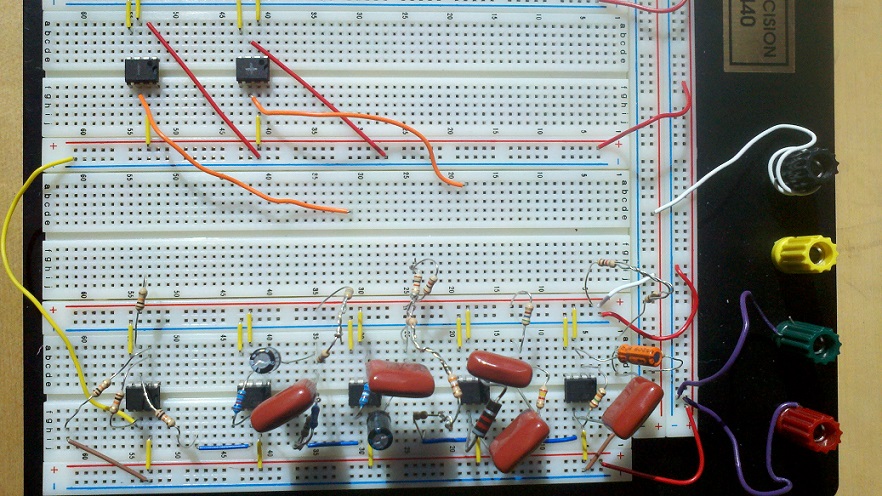Testing
Testing the team's detailed design began by building the 60 Hz notch filter. Initial construction attempts of the 60 Hz were unsuccessful, leading the team to discover that our design required very specifically valued resistors and capacitors. Once appropriate resistors and capacitors were used, the functionality of the 60 Hz notch filter was verified by using a function generator and an oscilloscope. The team then modified the 60 Hz notch filter by adding the circuitry required to build a limiter. Attaching the limiter circuitry was very simple and so no trouble shooting was required. A picture of the final 60 Hz notch filter and limiter is below.

Once the 60 Hz notch filter and the limiter were working as desired, the team began to look further into an H-bridge which was graciously donated by M.S. Kennedy. Although the team knew that the donated H-bridge was intended to be used as a motor controller, it was thought that the H-bridge could handle the high voltages and currents associated with the grid. After contacting an engineer as M.S. Kennedy, the team learned that the circuitry internal to the H-bridge would not funtion properly if connected to the grid. Thus, the assumption made by the team turned out to be incorrect. Since the H-bridge would not work as assumed, and it was too late to try and acquire a new one, the team determined that no physical prototype could be constructed.
Had a prototype been successfully created, the team planned on testing the design in the solar shack (located behind the engineering building). The Hall probe required for the design was to be attached to a power strip, and non-linear loads would then be plugged into the power strip. By monitoring signal distortion with and without the shunt active power filter, the functionality of the team's design could have been determined.


